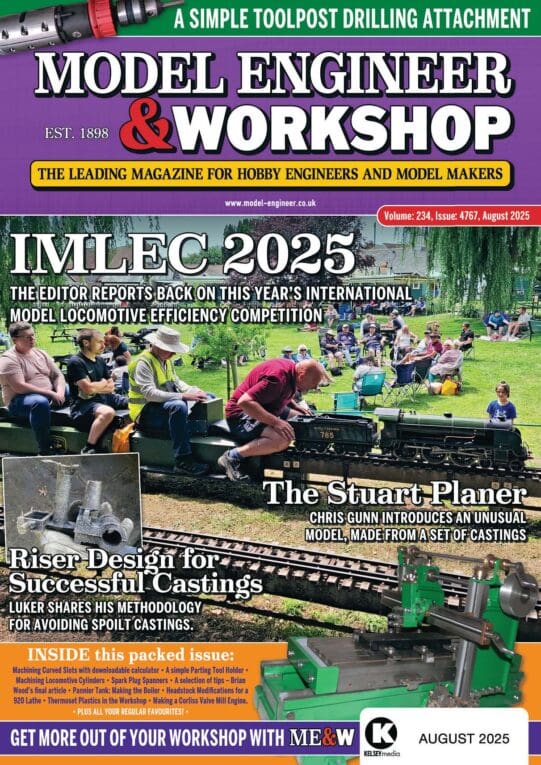The DRO and it’s maker Electronica Mechatronic Systems are new to me. Not the usual Chinese fare – EMS are an Indian company. A quick look at the Manual suggests the DRO is feature-rich, which made me wonder if it’s over the top for a lathe?
It’s a 3 axis DRO, when a lathe only needs 2. Though it will work fine on a lathe with only 2-axes connected, this DRO delivers full value on a milling machine or grinder. As Graham has said the lathe is new to him, I assume he’s not got a mill yet? If a milling machine is on the cards, and I recommend one should be, then a better strategy is to fit this DRO to the mill.
In the meantime, I suggest putting a temporary hold on gadget fitting. More important, I suggest, to learn how to drive the lathe in basic form than for a beginner to start by fitting go-faster accessories.
- No harm in fitting a tachometer to a Super7 as supplied by Myford, except it has 14 fixed speeds of: 27, 39, 54, 77, 95, 135, 210, 300, 420, 600, 740, 1050, 1480 and 2105 rpm determined by the belts and backgear. As it’s not difficult to know how fast the lathe is spinning, a tachometer doesn’t add much value, so fitting one may have been a time-waster! Tachometers are valuable on lathes with continuously variable speed control; maybe Graham’s Super 7 has been upgraded with a 3-phase motor and VFD, in which case his tachometer is useful.
- Whilst fitting a DRO to a mill is a no-brainer, they’re less obviously value for money on a lathe. For example, in my workshop the dials are good enough. Depends on what the lathe is used for though! A DRO advantage is their ability to switch between metric and imperial on the fly, but this conversion feature is low value to me because I work almost entirely in metric. My rare need to work in Imperial is satisfied with a calculator. On the other hand, a workshop obliged to constantly mix Imperial and Metric would save a lot of time and avoid mistakes by fitting a DRO.
I advise a beginner with a Super 7 to buy a copy of Sparey’s “The Amateur’s Lathe”, and work through it carefully. Build knowledge and understanding by reading the theory, step by step, then try to apply it. A fair amount of skill is required, and it’s acquired by practice, not by fitting a DRO. I recommend Sparey because he writes well and covers the theory relatively painlessly – almost no maths! Sparey’s book is contemporary with Myford lathes, making his advice a good match to a Super 7. The main problem with Sparey is he doesn’t cover stuff that hadn’t been invented in 1948! So don’t expect advice on carbide inserts, speed controlled lathes, brushless motors, or anything digital! For that look for something modern like Neil Wyatt’s Lathework for Beginners.
Another advantage of learning by using is that it highlights what’s really needed. A few hours tedious sweaty hacksawing might persuade a beginner on a budget that he needs a band-saw far more than a DRO. And a milling machine far more than a posh tenths micrometer, surface table and Gauge Block Set!
Beginners, including me, often start out with hazy ideas about what their workshop is for. Tends to lead to a burst of unwise purchasing at first, buying tools that get very little use in the long-run. Six months in the workshop clarifies what the owners interests are and what he needs to invest in.
There are always exceptions! A friend is a keen motorcyclist and he owns an immaculate fully equipped workshop. Nothing cheap in it – Snap-on tools and cabinets, and everything else is pro-quality equipment. Money is no object. He freely admits he doesn’t use any of it – when his bikes need work, he has it done by the dealer. He thoroughly enjoys pottering in his workshop, keeping it spotless, buying the best, and knowing that if he had to, he could maintain his bikes. Not how I work – my workshop is purpose driven, with tools bought to do a job, considered consumable, and I don’t care one jot about brand-names.
If you know what you want, get on with it, otherwise it pays to invest time in discovering what’s really needed.
Dave
 Fowlers Fury.
Fowlers Fury.










